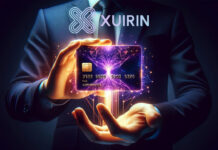
Digital payment methods have become commonplace in today’s data-driven world. Credit cards, debit cards, PayPal and many others like them give people the flexibility to purchase goods and services online in a variety of ways.
There is, however, just one problem with the vast majority of digital payment methods: they leave a trail governments and banks in 2017 can track.
Even if you pay with PayPal, it’s possible to trace your payment back to you. But what if you wanted to pay for goods or services without feeling like big brother is looking over your shoulder?
Worse yet, what if you wanted to purchase a VPN service, but were too scared to do so because there’s a chance that your government would retaliate with fines or jail time?
If you take privacy and anonymity seriously, there is some great news: you can start using Bitcoins as an online payment method.
If you don’t know what cryptocurrency is, don’t worry. We’ll take a step-by-step approach, starting with all the things you’ll need to follow this guide.
What You’ll Need to Follow This Tutorial
You don’t need much to start using Bitcoins. Obviously, since it’s a digital form of currency, you’re at least going to need a computer and some money.
In addition, an Internet connection is absolutely necessary, although it doesn’t even need to be a fast one. You will also need to get a Bitcoin address and an online wallet, as I’ll show you in this step-by-step guide.
Since Bitcoins are a form of currency, having some money is required. The good news is that you don’t even need a bank account or credit card. If you really want to fly under the radar, it’s possible to purchase Bitcoins with a PayPal account.
In summary, the following items are required to follow this guide regarding how to buy Bitcoins:
- Access to a computer, tablet or mobile device
- An Internet connection
- A Bitcoin address and online wallet (discussed in step 2)
- Money to exchange for Bitcoins
One last thing you need to keep in mind before we go any further is that Bitcoins aren’t legal everywhere, some countries have banned their use outright, while others take a more ambivalent stance toward the cryptocurrency. Make sure that owning and using Bitcoins is legal in your country of residence before you get started.
Following is an abbreviated list where, as of January 2017, Bitcoins have been outlawed:
- China
- India
- Russia
- Sweden
- Thailand
If you find yourself in one of these countries, consider using a VPN to buy Bitcoins.
Step 1: Understand What Bitcoins Are and How They Work
Before we get into how to purchase Bitcoins, there’s a few things you need to understand. First of all, understand that Bitcoins are a type of cryptocurrency and aren’t backed by any central bank.
Bitcoins exist independently outside of traditional currencies like the British pound, U.S. dollar or euro. They first surfaced in 2008, making them just shy of a decade old, and there is still very little known about where they came from and who invented them.

But what is a cryptocurrency, and who “prints” the digital coins, you ask? Like gold and other precious metals, which were first used to back paper money, Bitcoins are mined.
However, instead of swinging a pickaxe to mine Bitcoins, an individual sets his or her CPU to the task of solving incredibly complex mathematical formulas in exchange for Bitcoins.
Interestingly enough, the Bitcoin exchange process is P2P (peer-to-peer) and doesn’t need a computer or authority to act as a middleman. Nevertheless, payment and money exchanges are still recorded in register that is distributed among numerous nodes.
This means that Bitcoins are the number one anonymous digital currency to date, in terms of both the number of users and the total value of the currency.
Step 2: Setting Up an Address
Now that you know a little bit about Bitcoin, it’s time to get you set up with an address. An address is the equivalent of a bank account number in Bitcoin terms.
Every Bitcoin user has their own unique address, which is composed of a very long and complex series of characters and numbers. However, a single user isn’t bound to only one address. Instead, any user can have many addresses and can store them inside a digital Bitcoin wallet.
There are a lot of different places to go on the web to register for a Bitcoin wallet. In fact, a quick Google search will pull up more sites than you’ll ever need. But for the sake of brevity, here are my two favorites:
Be warned, however, that losing your password on either of these sites means losing your hard-earned money. Use a password database or some other secure means of recording sensitive information when you register for a wallet.
The registration process will generate a URL that points to your wallet. There have been horror stories of people in the past who mined masses of Bitcoins and either lost access to their wallet or accidentally threw out their hard drive.
In some instances, users accidentally tossed away Bitcoins that would now be worth millions of dollars.
Step 3: Acquiring Bitcoins
The next step, after you’ve registered for your wallet and address, is to visit a site that actually trades Bitcoins. There seem to be an infinite number of sites to choose from. Also, if you don’t want to register for an address and wallet with the providers in step two, note that most websites that buy and sell Bitcoins also have registration tools to help you get a wallet.
The following are just three of many popular Bitcoin sites that will show you step-by-step how to buy Bitcoins:
Once you’ve found a site that you like, it’s time to trade real money for digital money. There are many payment methods to exchange physical currency for Bitcoins, including PayPal, bank cards, credit cards, debit cards and so on.
Interestingly enough, I’d also like to mention that may of these websites don’t deal exclusively in Bitcoins. Instead, quite a few of them exchange wide varieties of digital currency. After Bitcoin exploded in popularity, there were a lot of copycat competitors that sought to follow in Bitcoin’s footsteps. Personally, I’d recommend sticking with Bitcoins, however, since they are the top dog in the industry.
Step 4: Paying with Bitcoins
By now you should successfully have purchased Bitcoins, which are sitting in your digital wallet. So, it’s time to purchase items all over the net with impunity, throwing caution to the winds since Bitcoins are completely untraceable, right? Well, no, not exactly.
There’s a lot of websites that don’t accept Bitcoins at all. That said, it seems that more and more websites are accepting Bitcoins every day. Loads of e-commerce sites have started accepting Bitcoins, though I’d like to point out a bit of a paradox.

If you’re making a payment on an e-commerce site with Bitcoins and you have to enter a shipping address, it slightly defeats the purpose of anonymity. Sure, you circumvent financial institutions’ paper trails by paying with Bitcoins, but the e-commerce site will have a record of your address, which could be traceable under a court order. For that reason, I think that Bitcoins are best used for digital services.
VPNs, cloud storage, software and other digital services don’t generally require much personal information when signing up for an account. Nevertheless, Bitcoins can still be used to purchase physical items and provide increased anonymity by conducting transactions outside a government’s monetary system. Just look for the little Bitcoin symbol under any websites payment options section to see if they accept digital currency.
Step 5: How to Buy Bitcoins Using Alternative Methods
Lastly, I would like to point out that you can mine your own Bitcoins. The procedure of which is outside the scope of this guide, but I’ll briefly outline the process.
Even though it sounds like a way to get “free” Bitcoins, know that an economist would argue that there’s no such thing as a free lunch. To mine Bitcoins, you’ll need to rent hardware in the cloud or purchase advanced graphics cards with high powered CPUs.
Some people choose lease computing resources online in order to mine Bitcoins 24/7; as they say, it takes money to make money. On the other hand, some folks choose to use their personal computer’s CPU or GPU to mine Bitcoins, which could have a massive impact on system performance.
Conclusion
Although digital currencies haven’t replaced paper money and coins, it seems that Bitcoin is going to be around in the years to come. Plus, it looks like other digital currencies will emerge and become more popular. Perhaps one day in the not-so-distant future, all money will be digital.
Sign up for our newsletter to get the latest on new releases and more.
At any rate, you should have a good understanding of the basic process of signing up for an address and wallet, and then purchasing Bitcoins. If you have any questions, comments, or concerns, feel free to let us know in the comments below. Thank you for reading.

TheBitcoinNews.com – Bitcoin News source since June 2011 –
Virtual currency is not legal tender, is not backed by the government, and accounts and value balances are not subject to consumer protections. TheBitcoinNews.com holds several Cryptocurrencies, and this information does NOT constitute investment advice or an offer to invest.
Everything on this website can be seen as Advertisment and most comes from Press Releases, TheBitcoinNews.com is is not responsible for any of the content of or from external sites and feeds. Sponsored posts are always flagged as this, guest posts, guest articles and PRs are most time but NOT always flagged as this. Expert opinions and Price predictions are not supported by us and comes up from 3th part websites.
Advertise with us : Advertise
Our Social Networks: Facebook Instagram Pinterest Reddit Telegram Twitter Youtube











